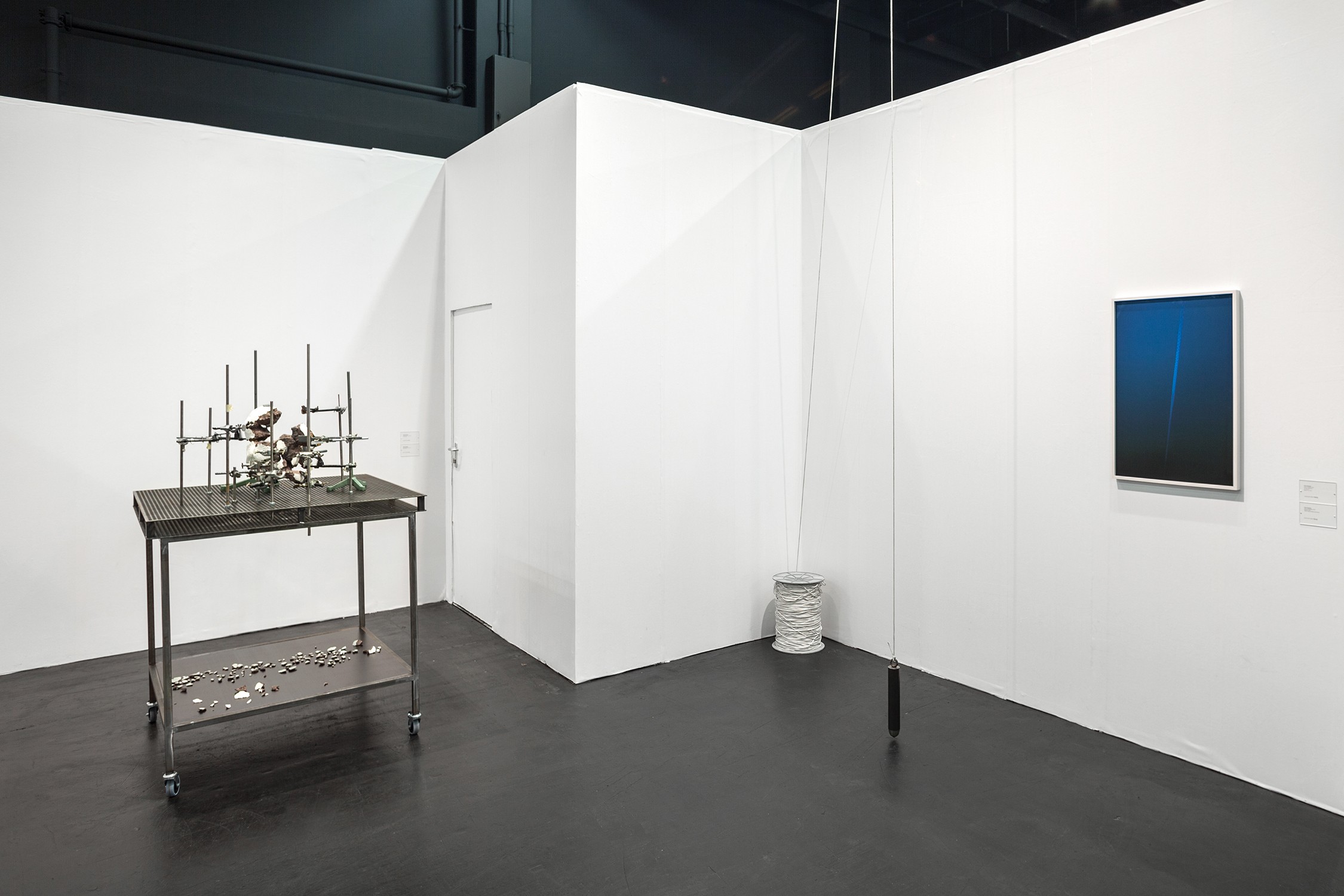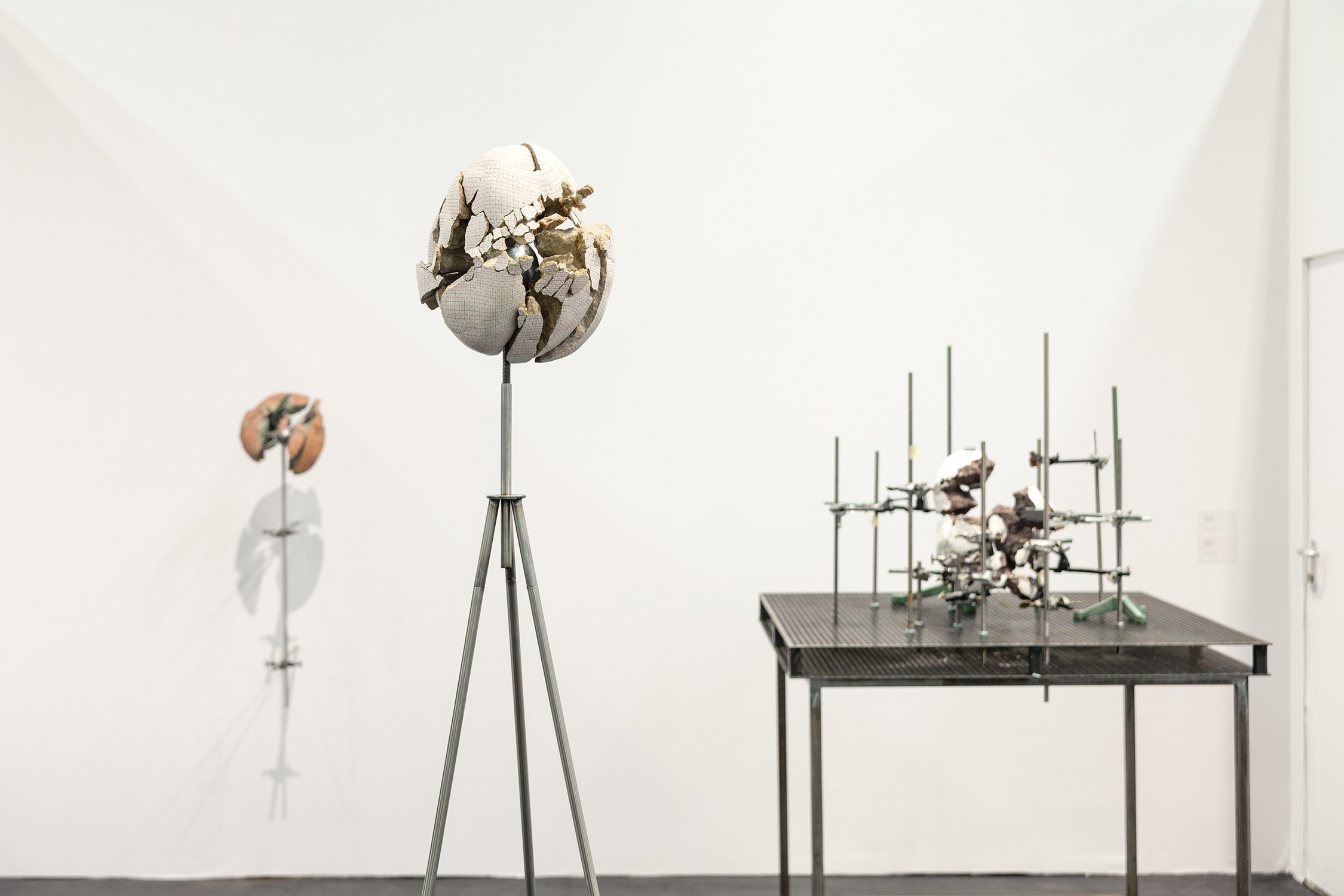



The gallery alexander levy is pleased to present recent works by Felix Kiessling and Julius von Bismarck at the 52nd edition of Art Cologne.
Erddurchstechung (Global Piercing)
Through Erddurchstechung (Global Piercing) Felix Kiessling playfully interacted with the world and tried to overcome physical distances, by considering their theoretical and material presence. For this piece he travelled to two places located precisely on opposite sides of the globe – namely the Rangipo desert in New Zealand and the Parque Nacional de Cabañeros in Spain. At these antipodean points, he vertically anchored metal pipes in the ground to form a common line. He created an imaginary link between two positions that are furthest apart from each other. The entry and exit point of this global piercing are documented in the photograph.
Vavilov
“Equipped with a weight, a rope and a boat, I travelled into the centre of the Tyrrhenian Sea to touch the volcano Vavilov, 800m below the water surface. I let down the weight. I sensed the moment it would touch the ground. I sensed a connection to the invisible 800 meters below. I sensed 800 meters: The force on the weight drastically dropped as the weight landed. Gravitation had stopped to pull. The drift of the boat caused a remaining force. We were unable to stay in position. And with its length of 800m and a width of 4mm, the current weighting on the rope wasn‘t to be underestimated.” Felix Kiessling
Apocalypsoid
The series Apocalypsoid, consists of various blown up and partially reassembled stones.
These are remnants of boulders and flint stones, which the artist blew up. Prior to the explosion, each stone was provided with a coordinate system, which divides the stones surface into alphanumeric labelled quadrants with latitude and longitude. This not only aided the cartography of the stones surface, but also enabled the later assembling of the fragments and splinters. Stainless steel struts hold the individual set pieces of stone in the air, almost as if they were floating. The original comet-like shape of the stones prior to the blast is clearly visible. At the same time, it appears that the stones are frozen at the moment of the explosion – a state that the naked eye is normally unable to perceive.
The marked stones were scanned with a computer tomograph before the blast and filmed at the time of the explosion by a slow-motion camera, to capture the fleeting moment of break. The remaining individual parts and rock fragments were again x-rayed in order to locate the countless fragments of the stones, with the aid of a digital reconstruction.
In order to realize the complex process of the planetoid reconstruction, many experiments were carried out and various apparatus developed. One of these constructions is displayed next to the sculptures and gives an idea of the process of the entire experiment.
Installation views: Markus Hoffmann